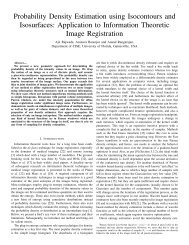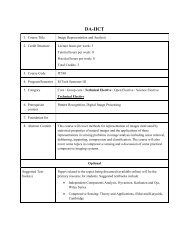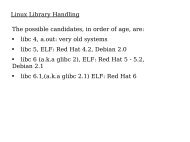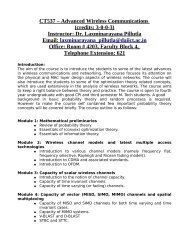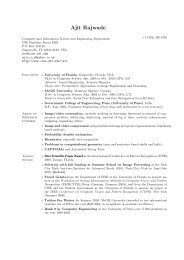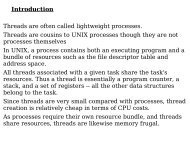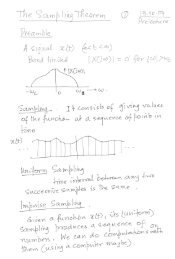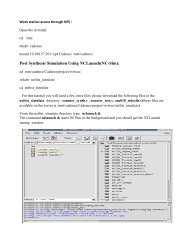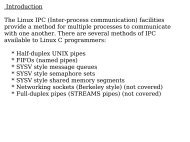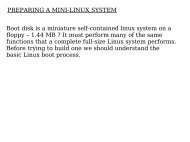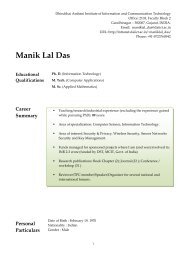Power Management in Embedded Systems - DAIICT Intranet
Power Management in Embedded Systems - DAIICT Intranet
Power Management in Embedded Systems - DAIICT Intranet
Create successful ePaper yourself
Turn your PDF publications into a flip-book with our unique Google optimized e-Paper software.
Congruence Class<br />
● No device driver has the global view of the system or the power<br />
management strategy required to completely specify the operat<strong>in</strong>g po<strong>in</strong>t.<br />
This <strong>in</strong>formation is centralized <strong>in</strong> the DPM policy structure as a<br />
congruence class of operat<strong>in</strong>g po<strong>in</strong>ts.<br />
● Any of the operat<strong>in</strong>g po<strong>in</strong>ts <strong>in</strong> a class would be acceptable as an operat<strong>in</strong>g<br />
po<strong>in</strong>t for the system <strong>in</strong> the given operat<strong>in</strong>g state, although device constra<strong>in</strong>ts<br />
might render some members of the class <strong>in</strong>valid, and power considerations<br />
might cause one operat<strong>in</strong>g po<strong>in</strong>t to be preferred over other valid operat<strong>in</strong>g<br />
po<strong>in</strong>ts <strong>in</strong> the class. At any given po<strong>in</strong>t <strong>in</strong> time a valid DPM policy will<br />
designate one member of each congruence class as the selected operat<strong>in</strong>g<br />
po<strong>in</strong>t for that class.



